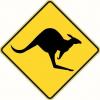
Originally Posted by
Jim Becker

I never had an issue getting a stop fixed accurately on my outrigger or my short miter fence on the slider and for the amount of use I put on the machines, a DRO wouldn't pay on that tool. (It would pay on the thicknesser and I do have one on my drum sander) But folks who are doing a lot of adjustments on the stops for production work would likely benefit from the DRO setup as it would be easier to get it spot on at a glance where "time is money".
I think there is a terminology problem creeping in to sliding table saw discussions in general that creates some problems for new users. Wagon/sliding table, mitre fence/cross cut fence and most probably more.
DRO's have a particular problem, The DRO can be set up for one particular fence/blade configuration on the rip fence but change any part of that configuration as pointed out above and the DRO loses zero. I have multiple blades and change them as needed and using the Wixey DRO it is a PIA to re-calibrate it to zero for a couple of cuts. When I initially put the Wixey on the saw many years ago the problem did not exist because I never found the need to change the blade.
I have been playing around with a DRO on the K3 outrigger CC fence for a few years now I think I may have the answer but with the frustration created by blade changes I have not rushed into it. I am trying to think of a quick method of calibration using a different DRO to make the change a simple matter. Maybe a calibrated length of material to set the flip stop then zero the fence has been floating around in the brain cells lately.
Chris
Everything I like is either illegal, immoral or fattening





 Reply With Quote
Reply With Quote







